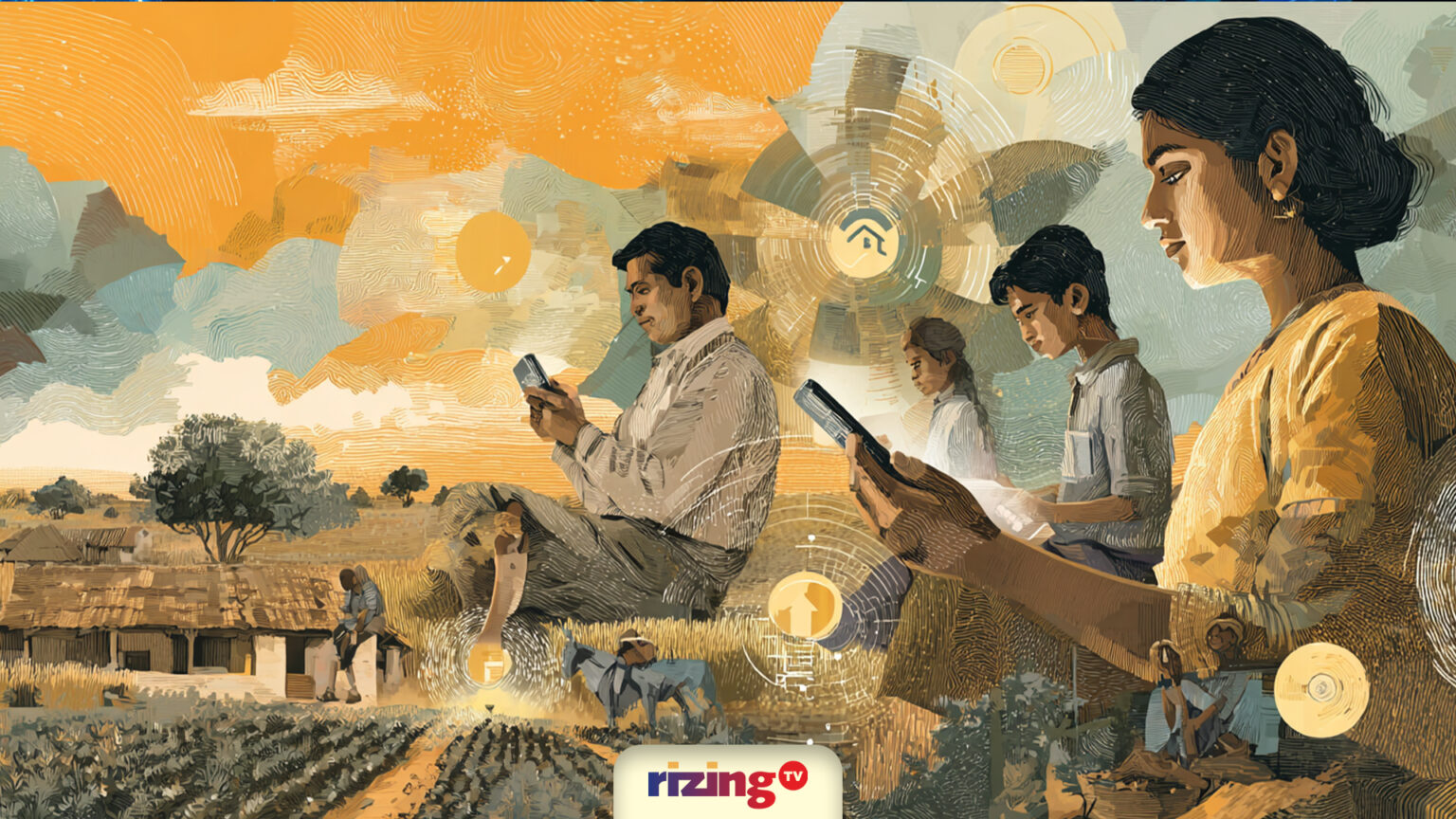Because the next billion entrepreneurs won’t come from Silicon Valley, they’ll come from Sangli, Salem, and Sitamarhi.
If you listen closely to the hum of India’s villages, you’ll hear a quiet kind of innovation. It’s not the sound of funding rounds or hackathons. It’s the sound of farmers checking mandi prices on feature phones. Of local cooperatives using WhatsApp to coordinate milk collection. Of women entrepreneurs managing small loans through digital wallets.
Now imagine if that ingenuity met intelligence, artificial intelligence. The arrival of Generative AI in India has mostly been framed in the language of enterprise and productivity. But its true revolution may not unfold in boardrooms or campuses, it may unfold in the margins. In the panchayat office that doubles as a startup incubator. In a self-help group that learns to prompt an AI chatbot in Hindi, Bhojpuri, or Tamil.
This week’s GenAI Prompt explores what it would take to use AI for rural entrepreneurship, not as a novelty, but as infrastructure.
The New Rural OS India’s rural economy has never lacked creativity; it has lacked context, timely data, transparent prices, access to capital, and knowledge at scale. Generative AI can’t replace human effort, but it can fill those contextual gaps that slow down ambition.
Think of it as a Rural Operating System, powered by AI, where information, credit, and coordination flow intelligently between farmers, cooperatives, and small businesses. At the heart of this vision are three prompt ideas that can make AI locally useful:
1. Vernacular Chatbots for Mandi Prices
Imagine a voice-first AI interface that lets a farmer in Jalgaon or Jodhpur ask, in their dialect, – What’s the price of soyabean in Indore today? and get an instant, accurate response. No typing, no app navigation, just conversation. These chatbots could integrate with Agmarknet, eNAM, and regional agricultural boards, giving real-time updates in local languages and even recommending nearby buyers or logistics partners.
2. AI-Driven Co-Operative Management
Rural cooperatives are the heart of India’s micro-economy, from dairy to weaving to microfinance. Yet, their management often depends on manual bookkeeping, paper ledgers, and human recall. An AI assistant could help co-op managers track member contributions, forecast supply, generate reports, and even draft subsidy applications, all through natural languageinteraction.
Picture a chatbot that understands the difference between lakh and kilo, or one that can automatically translate data into government-compliant formats. That’s the power of context-aware AI built for India’s grassroots.
3. Local Credit Scoring and Risk Insights
The biggest friction in rural entrepreneurship isn’t talent, it’s trust. Credit often flows where data exists, not where need does. AI can change that equation by creating alternative credit profiles using behavioural, transactional, and community signals, for example, consistency in payments to a cooperative, punctual attendance at training sessions, or verified social references.
This data, anonymised and aggregated, could give lenders confidence without formal collateral, expanding financial inclusion while maintaining fairness. Together, these ideas don’t just automate processes, they amplify participation. They make the intelligence of AI legible in the languages, idioms, and aspirations of rural India.
The Prompt Frontier: Talking to AI in Indian
Generative AI’s greatest promise in India isn’t that it will generate code, it’s that it will understand conversations.
We often talk about low-code tools as the future of work, but in India, it might be no-code conversations that drive adoption. AI that can respond in Marathi or Maithili, not just in English, will lower barriers faster than any policy intervention.
A small business owner in Bihar shouldn’t need a consultant to use analytics, they should be able to ask a chatbot:
Show me which day of the week my sales are highest.
or
Predict how much jaggery I’ll produce if rainfall is 10% lower this season.
This is the new literacy, the ability to think in prompts, not programs. And it may redefine digital empowerment in the same way that mobile phones once did.
Where Innovation Meets Inclusion
The challenge, of course, is not in building these tools but in building trust around them. Rural entrepreneurs don’t want complexity, they want reliability. They want systems that speak like them, not atthem.That’s why the next phase of India’s AI growth must be inclusive by design. Not an afterthought, not a CSR project, but a deliberate effort to embed local data, dialects, and decision-making logic into AI models.
There’s already movement in this direction. Startups like Sarvam AI, Krutrim, and CoRover are building India-first language models and conversational platforms. If these efforts converge with local governance systems like Common Service Centres (CSCs), the result could be transformative, an intelligent rural digital backbone that supports every micro-entrepreneur.
The Human Multiplier
Technology alone doesn’t create prosperity; people do. But when technology listens, really listens, to people, it multiplies their ability to act. Imagine a future where a group of women in a Maharashtra self-help group use a GenAI assistant to design product packaging, forecast market demand, and draft loan proposals, all in Marathi, all by voice. Or a village-level entrepreneur in Assam using AI to schedule irrigation or track fish yield using weather prompts.
These are not utopian ideas. They are design challenges, and every AI builder, policymaker, and investor in India should be thinking about them. Because the next billion users will not need to learn AI; AI will need to learn them.
The Friday Prompt
If you’re building in GenAI, here’s a prompt to play with:
You are a local business assistant for a village cooperative. Using open mandi data, generate a daily market price summary for cotton and sugarcane in Hindi, along with suggested selling points and buyer trends within 100 km.
Now imagine that prompt being spoken aloud by someone who has never touched a computer, and getting an answer that changes their day.
That’s not just AI for good. That’s AI for growth.
Closing Thought
The story of India’s AI revolution will not be written in code alone. It will be written in the hands of millions who till, trade, and teach in local economies, who may never say prompt engineering, but who know exactly what they need from the world.
For them, GenAI isn’t a frontier technology. It’s a new language of opportunity. And when we teach AI to speak in their voices, we’ll realize something profound, that intelligence was never artificial. It was simply waiting to be heard.


